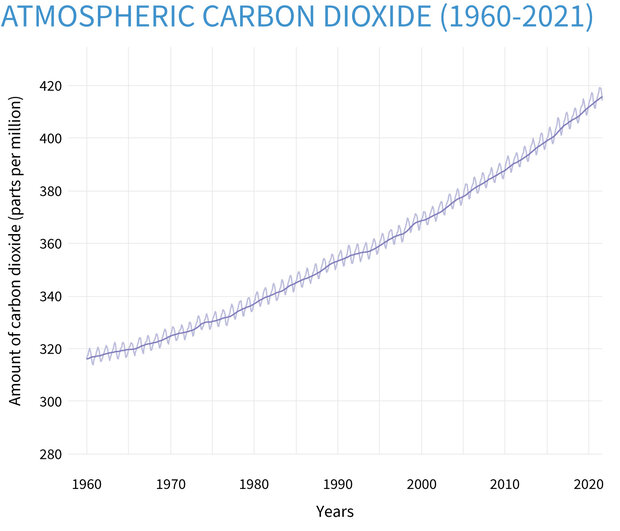Upcycling carbon dioxide is the next big step towards slowing climate change
Climate change is one of the most pressing issues plaguing our planet. The rapid heating of the earth is causing the destruction of ecosystems, extinction of species, increase in wildfires, tropical storms, droughts, and ocean acidification (1,2). Our climate is deteriorating due to the increase of greenhouse gas emissions into our atmosphere. Carbon dioxide (CO2) is the most prevalent greenhouse gas in our atmosphere; similar to other greenhouse gasses, it traps sunlight within the Earth’s atmosphere and contributes to the rapid heating of our Earth. It is one of the main contributors to global warming and climate change.
In 2020, global CO2 levels were at 412.5 parts per million (ppm), a record high. Since then, carbon dioxide levels have increased 2.6 ppm in the last year, despite the economic slowdown due to Covid-19 (2).

Companies such as Carbon Upcycling Technologies are creating new innovative technologies to upcycle carbon dioxide to fight climate change and reduce their carbon footprint. Carbon Upcycling Technologies recycles carbon dioxide to create solid materials that can be used in concrete, plastics, and other consumer products (3). Other companies are following suit, such as a coal and lime production facility in China which will become a similar carbon recycling facility later this year. They will take the carbon dioxide emissions from their furnaces and turn it into methanol, a form of fuel. This company will use methanol as a new source for fuel and plastic production, possibly saving over 100,000 tons of CO2 each year (4).
However, there is debate on whether CO2 recycling actually benefits our climate. Some argue that it only delays carbon dioxide emissions into the atmosphere, thus producing little benefit to our climate (4). Energy systems engineer Niall Mac Dowell at the Imperial College London claims that framing efforts to upcycle CO2 as “economically attractive and easy way” would be “naive and actively disingenuous” because of how little of the total amount of carbon dioxide in the atmosphere is actually reduced (4).
Others argue that it is worth trying to modify as much of the industrial energy market as possible, even if the effects are small. One company called CRI opened their first CO2-to-Methanol converter plant back in 2012 in Iceland, which recycles 5,500 tons of CO2 each year. (4) Although their prices for methanol are more expensive, CRI’s chief technology officer, Emeric Sarron, believes that “companies that need to source renewable fuels are willing to pay a premium for it” (4). There is a lot of controversy around whether CO2 recycling is actually a viable way to prevent climate change. However, our deteriorating climate directly correlates to the rapidly increasing CO2 levels. We can not be bystanders to this disaster, and we must push for change.
Bibliography:
- The Effects of Climate Change. NASA. Retrieved from https://climate.nasa.gov/effects/
- Lindsey, R. (2020, August 14) Climate Change: Atmospheric Carbon Dioxide. Climate.gov. Retrieved from https://www.climate.gov/news-features/understanding-climate/climate-change-atmospheric-carbon-dioxide
- Technology. Carbon Upcycling Technology. Retrieved from https://carbonupcycling.com/technology
- Peplow, M. (2022, March 29) The race to upcycle CO2 into fuels, concrete and more. Nature Portfolio. Retrieved from https://www.nature.com/articles/d41586-022-00807-y
Image Source:
Lindsey, R. (2020, August 14) Climate Change: Atmospheric Carbon Dioxide. Climate.gov. Retrieved from
